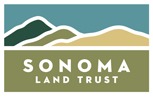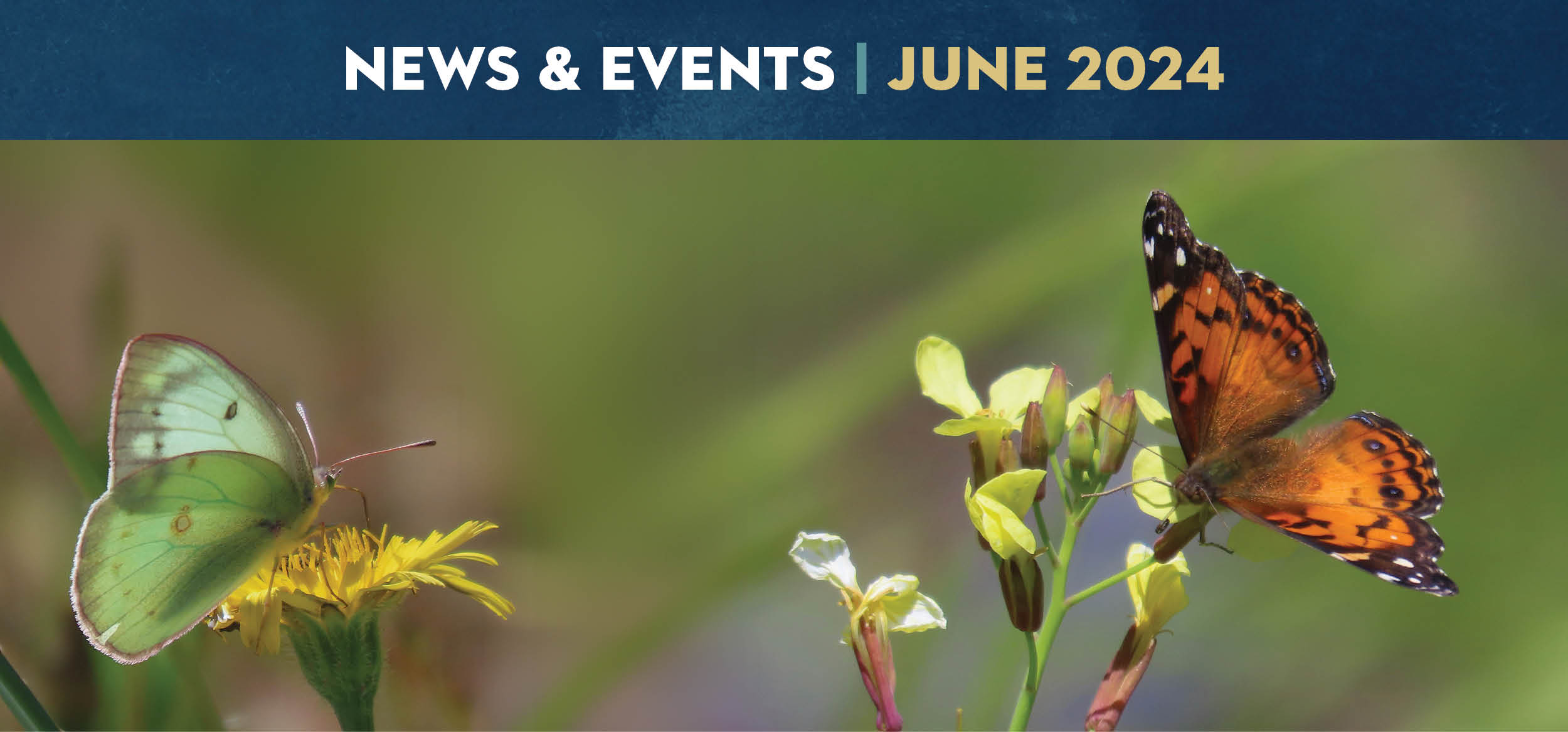
Land preserves are vital for climate science, serving as living labs where researchers track biodiversity and ecosystem health over decades of time in location. Discover how our protected areas reveal nature’s secrets and guide conservation efforts in this month’s eNews.
Living Labs for Climate Science and Conservation
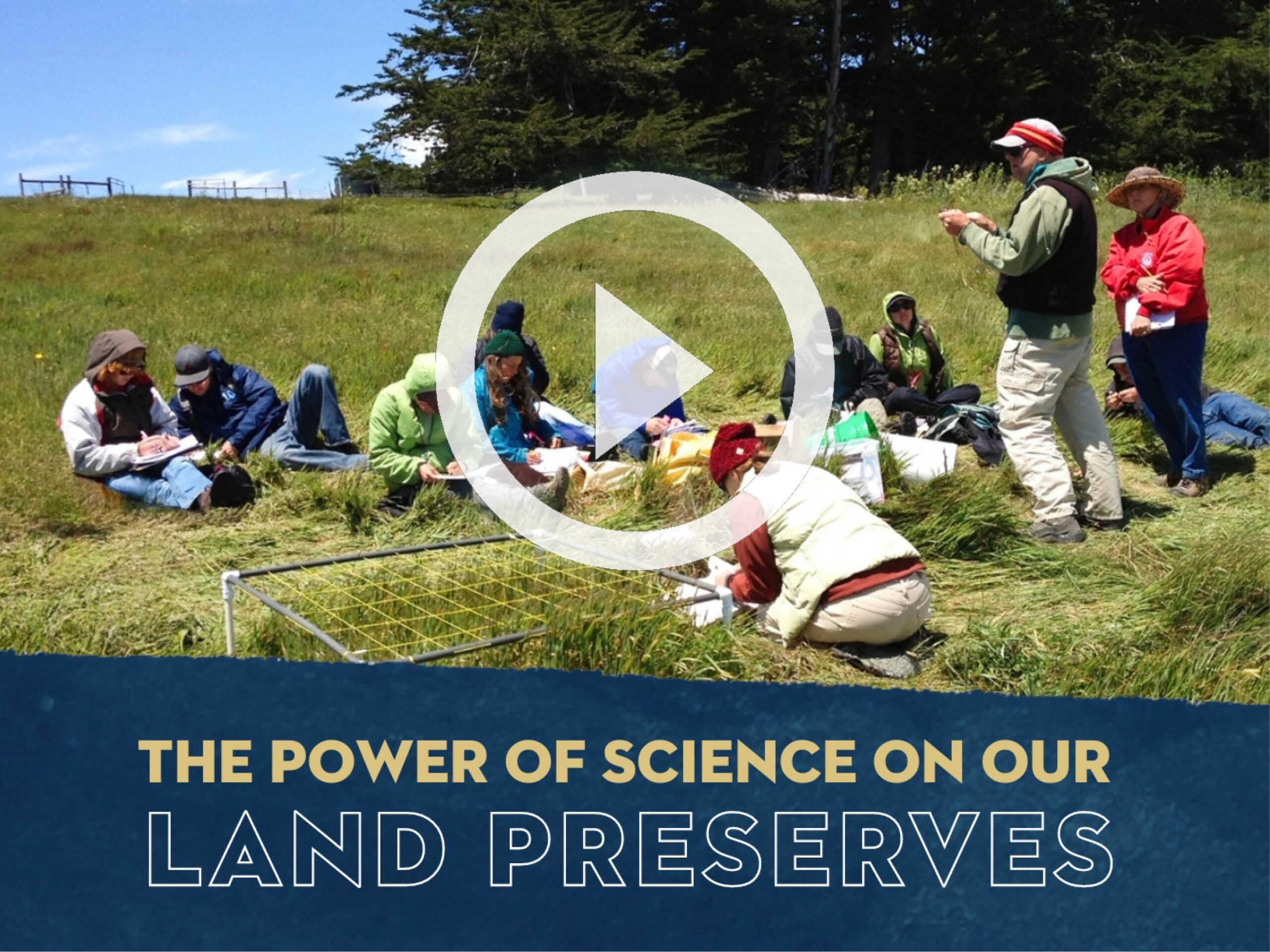
Land preserves are vital for climate science, serving as living labs where researchers track biodiversity and ecosystem health over decades of time in the same location. Discover how our protected areas reveal nature’s secrets and guide conservation efforts in this month’s eNews.
Rangeland monitoring with Point Blue Conservation Science
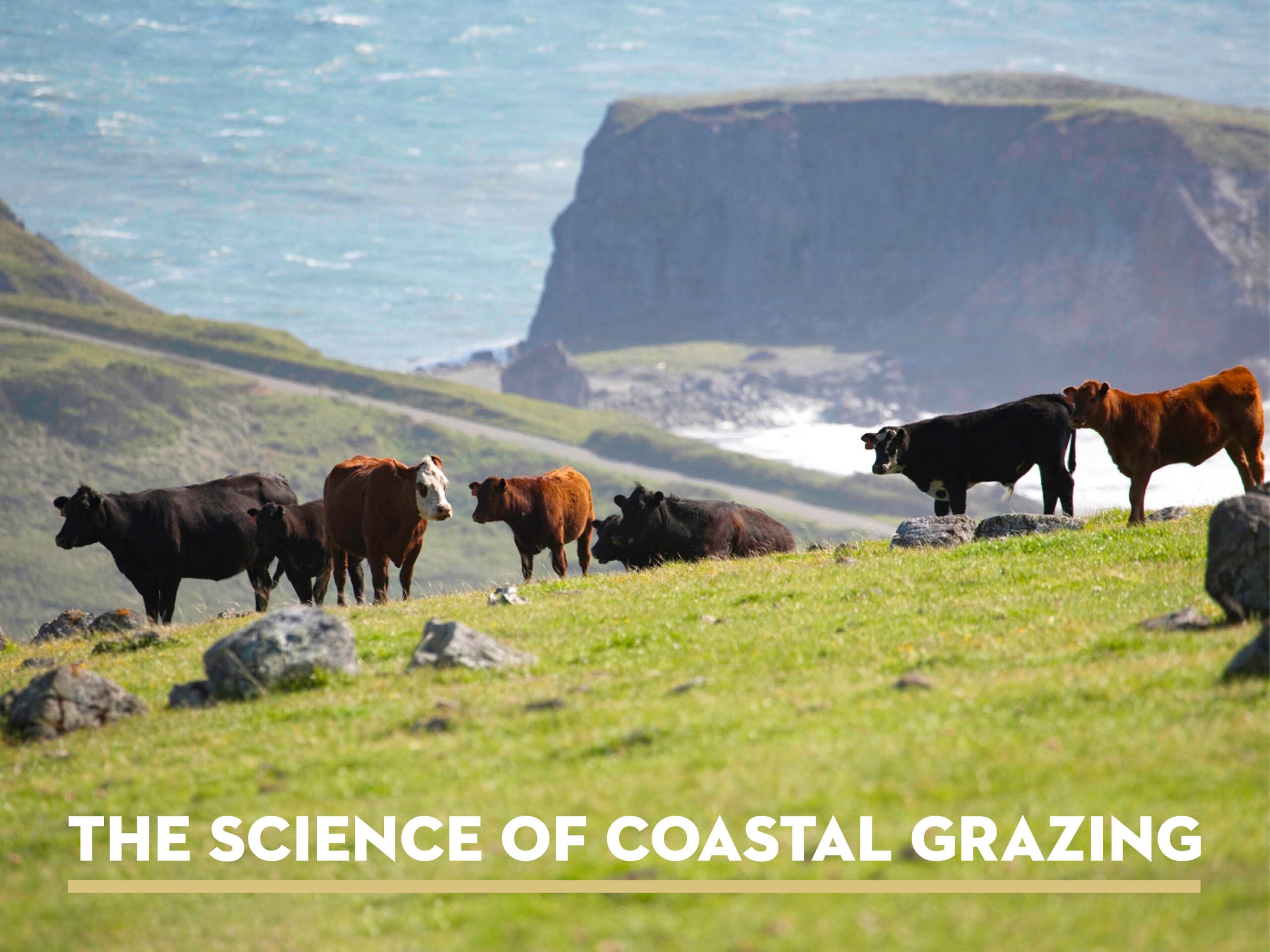
Each piece of land that Sonoma Land Trust cares for has special circumstances that require a tailored restoration and maintenance plan. Our stewardship team spends numerous hours observing a landscape and its features, its natural resources and wildlife habitat, and its function for the community. While this may seem like a first step that only occurs directly after acquisition, the reality is that our approach to land management is adaptive and ongoing! The actions we take – or choose not to take, as leaving nature to its own will is a management decision unto itself – can dramatically shape how an ecosystem functions. That’s why it’s so important that we continuously monitor the results of our efforts and adjust accordingly.
A cycle of adaptive management
Our land stewards’ qualitative monitoring is invaluable, but consistently measuring specific indicators with quantitative data is essential to determine if our management actions are on the right track. The type of monitoring and evaluation that yields these results is precise, targeted, and scientifically rigorous, and we’re grateful to collaborate with the experts at Point Blue Conservation Science on this work.
Two of our coastal preserves, Pole Mountain and the Estero Americano, along with our partner The Wildlands Conservancy’s Jenner Headlands, serve as project sites for Point Blue’s Rangeland Monitoring Network. In this statewide program, biologists collect information on birds, vegetation, and soils at each property to evaluate how cattle grazing affects oak woodlands, grasslands, and riparian areas. Every three years we receive a dashboard detailing how the land is faring, paired with guidance on how to improve ecosystem health.
Why conservation grazing?
Our mission of conserving land across Sonoma County includes not just natural open spaces, but also agricultural and working lands. In addition to using fire adaptive management practices to improve wildfire resilience and ecosystem health, we work with ranchers to employ targeted livestock grazing that provides a disturbance that improves native flora and soil health, maintains diversity of grassland structure for optimal wildlife habitat conditions, and reduces thatch and brush encroachment for fuel reduction. Grazing is widely employed on conservation lands throughout California as it’s economical, can be applied over vast areas, and is compatible with existing land uses.
Three indicators of grassland health
To successfully establish a monitoring program, we need clear objectives and a long-term commitment. By establishing a baseline and comparing long-term data, we can identify what’s working and what needs adjustment. Our partnership with Point Blue and their Rangeland Monitoring Network focuses on three sets of indicators from three coastal preserves, which we evaluate every three years.
- Vegetation – Assessments of plant cover provide information about how vegetation varies across rangelands and how they relate to different conservation practices, and wildlife diversity and abundance. Point Blue scientists look at invasive weeds, vegetation structure, and variation in annual and perennial plants. They lay out transects across the land and put down a pin flag, recording each plant it touches. This gives us an idea of what the top species are.We know we aren’t going to restore our coastal preserves to 100% native flora, but we can knock back annual grasses by using cattle at the right time of year to consume seed so less of these plants are repopulated. Our goal is for native grasses to fill the space left behind, nudging toward a perennial bunch grass dominant system.
- Soil – Point Blue monitors three dynamic soil properties, which can be altered over time by land management: water infiltration, bulk density (a measure of soil compaction), and soil organic carbon. Our goal is to increase carbon sequestration on our preserves through grazing, contributing to climate resilience in addition to our other management goals.
- Birds – Avian species are excellent indicator groups of the health of an ecosystem as they’re sensitive to environmental variability and are relatively easy to study. Certain birds require specific habitat conditions, and if they’re present or not tells us if habitat is healthy enough to support their own life cycles, as well as those of other wildlife. Monitoring for birds on our land entails census counts – spending time listening for, observing, and recording the number of species detected and how it’s changing over time.
In 2010, Point Blue ecologists studied songbirds and raptors in the grassy habitats of Jenner Headlands and nearby Sonoma Coast State Park. They found a variety of grassland species in the preserve, including savannah, lark, and grasshopper sparrows; horned lark; and western meadowlark. In the state park, they found many savannah sparrows but no grasshopper sparrows. The park’s land hasn’t been grazed in decades, while managed grazing at Jenner Headlands likely created more consistent grassland conditions that support the sparrows’ lifecycle.
Although Point Blue scientists currently conduct this work as part of the Rangeland Monitoring Network, the dedication of community scientists and birders, who have supported our conservation work with their own data collection for decades, remains invaluable.
The latest insights
Our most recent monitoring reports for our coastal preserves feature data from 2022, which we’re able to compare to our baseline data to plan any necessary shifts in management practices. Each report includes sampling methods, results, and recommendations; here are a few highlights from each preserve:
Pole Mountain: In 2022, Pole Mountain’s oak woodland habitat had the highest number of habitat indicator bird species present, and scientists noted an increase in California quail. Livestock grazing was reinstated in 2019 in response to Pole Mountain’s grassland plant community being heavily dominated by annual grasses. As a result, annual grass cover has reduced by an average of almost 50% since the first measurement in 2018.
Jenner Headlands: The coastal grasslands at Jenner Headlands continue to support an abundance of grassland species, such as Savannah and Grasshopper Sparrows, both of which are California Bird Species of Special Concern.
Estero Americano: The mosaic of habitat structures across the grassland landscape provides important bird habitat. In the latest report, there were 15.3 bird species per census count point, with increases in Grasshopper sparrow, Anna’s Hummingbird, Wrentit, Song Sparrow and California Towhee. There was also an uptick in the total number of bird species detected between 2011 and 2022, demonstrating an increasing capacity to support nesting birds.
An ongoing partnership
We’re thrilled that in addition to the grassland monitoring work, Sonoma Land Trust and The Wildlands Conservancy are partnering with Point Blue with support from the Cornell Lab to assess woodland birds as an indicator of ecosystem health on land being managed for wildfire resiliency. This project will compare the 2023 spring breeding season to baseline surveys over the past 10 years on the Jenner Headlands, Pole Mountain, Little Black Mountain, and Bear Canyon Wildlands to assess the impact of fuel reduction treatments.
This study examines species richness and abundance, as well as special-status or indicator species. We’re hopeful that findings can help communities manage forests and maintain healthy bird populations! Our goal with this work is to engage other land managers in the approach of monitoring birds as a barometer of forest habitat health.
Lands as laboratories, now and forever!
We’re using our lands as laboratories – working with the most widely respected scientific professionals to test how our methods are improving the health of the land, and what we can adjust to become more effective. However, there are factors beyond our control that can influence the vegetation, soil, and bird data we collect, which are important to understand and account for.
Climate change is one of these impacts, and it’s critical that we continue monitoring, evaluating, and adjusting our land management strategies to adjust to a changing environment. Our experienced land stewards know our preserves like the backs of their hands, and while they work to solve the problems of today, they’re also thinking ahead, ready to pivot to the next challenge on the horizon to ensure that Sonoma County is resilient in the face of a changing climate and the land will remain healthy for future generations. Our work is continuous and ever-evolving – that’s what makes it so exciting!
Behind the scenes of a wildlife survey
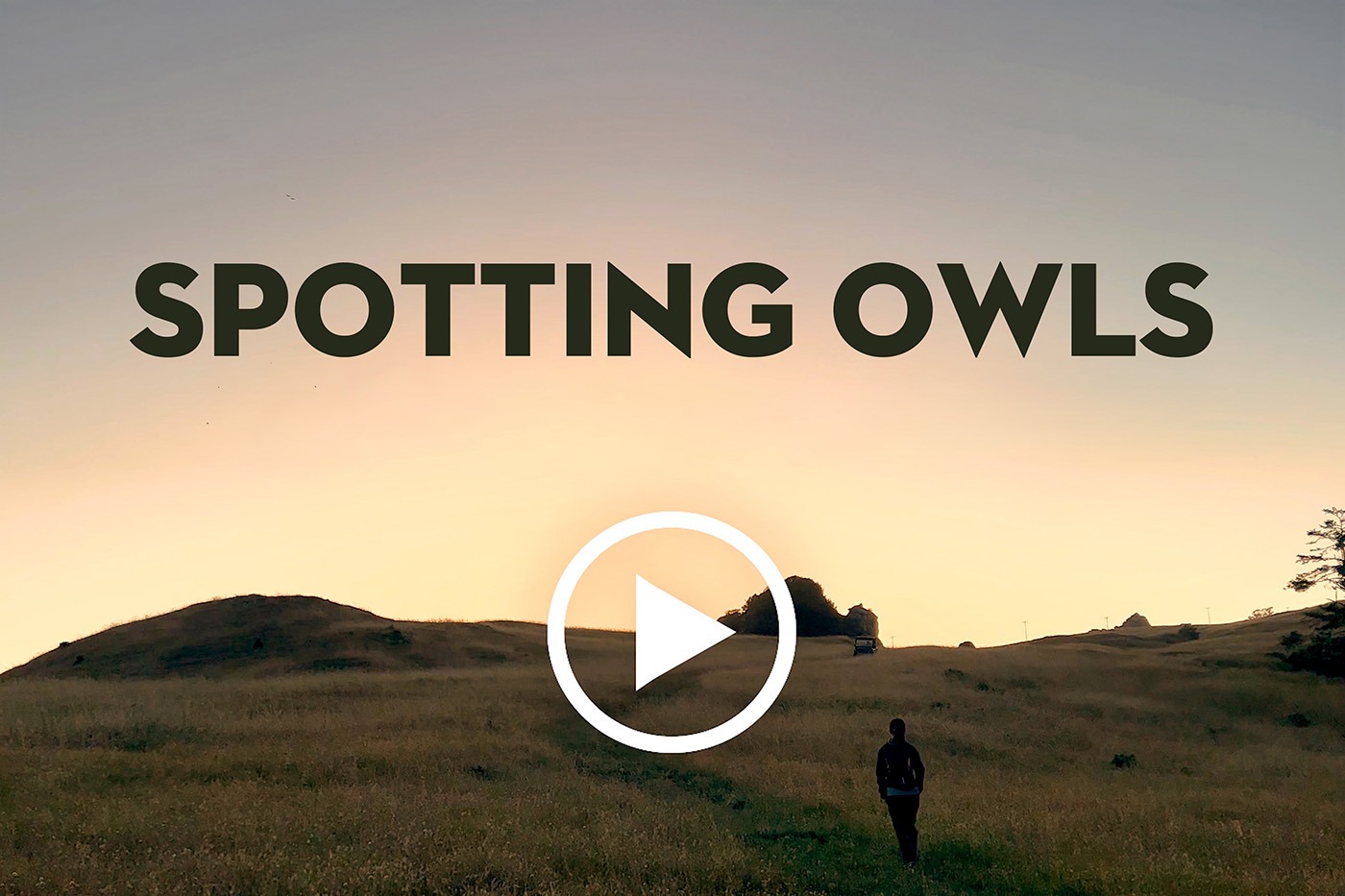
Our partners at The Wildlands Conservancy are working to restore the redwoods forests and streams of the iconic Jenner Headlands Preserve – acquired by Sonoma Land Trust in 2009 as the single largest conservation land acquisition in Sonoma County! One way we can gain a greater understanding of the health of the forest and the efficacy of restoration tactics is to survey for indicator species like the federally threatened Northern Spotted Owl.
For three consecutive nights each month from April to August, Wildlands staff depart the Preserve office at sunset, making their rounds playing Northern Spotted Owl vocalizations at designated call spots. In surveying and monitoring Northern Spotted Owl activity on the Preserve, staff are able to locate nesting areas during breeding season to avoid disruptions made by forest restoration, identify potential threats such as encroaching barred owls, and measure overall forestry conservation efforts.
Sonoma Land Trust Marketing Director Gina Fabiano joined TWC’s Sonoma Coast Preserves Manager Ryan Berger for an evening of spotted owl surveying, with filmmaker Matt Fabiano documenting the whole thing and giving us a behind-the-scenes look at what goes into this process.
Food for Flight – Nectaring plants for Butterflies
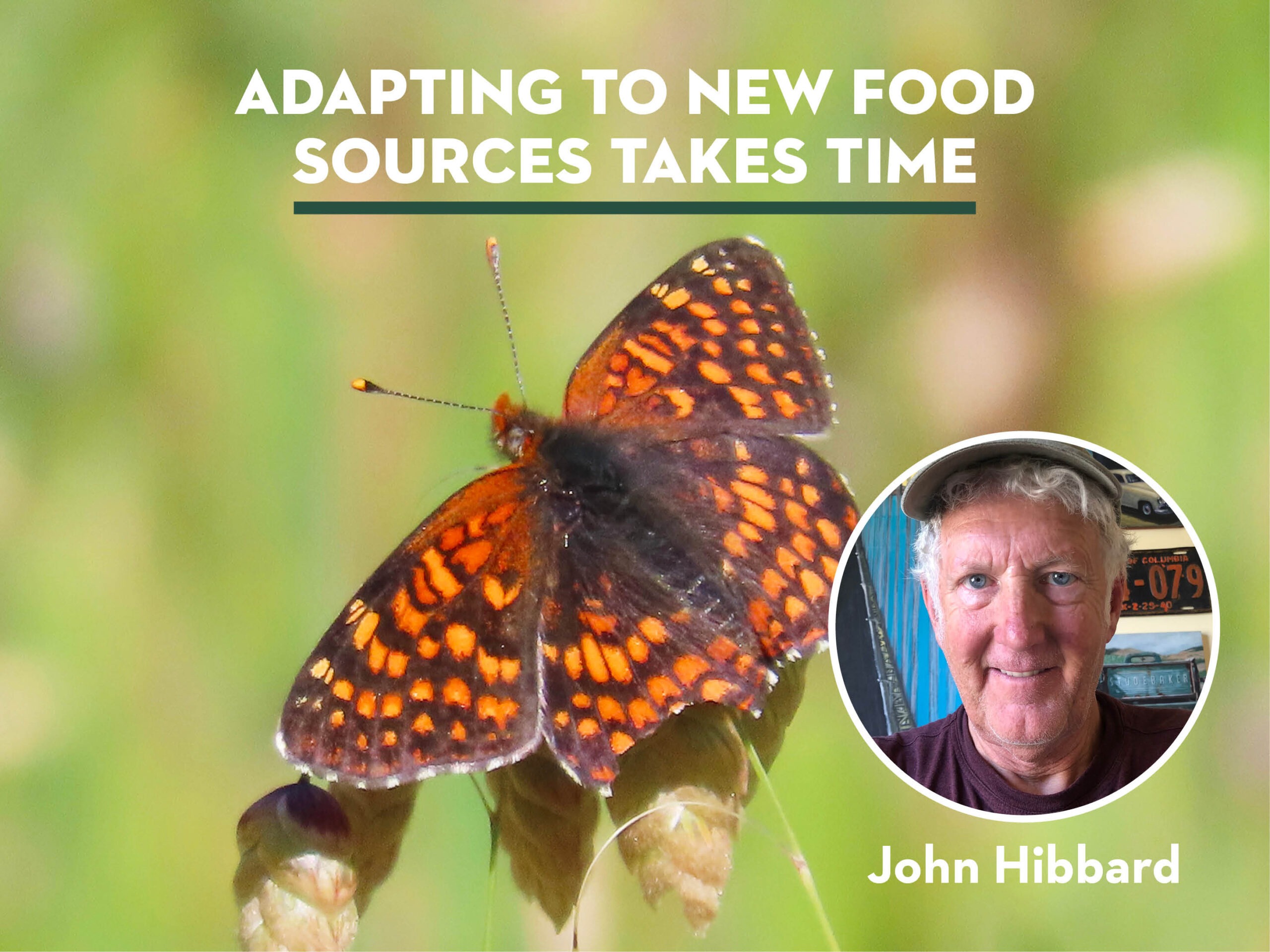
John Hibbard, a local amateur naturalist, has decades of research and thousands of observations on iNaturalist (account name icosahedron) that reflect his lifelong interest in California butterflies. He has been invited to conduct a season-long inventory of butterflies on our Live Oaks Ranch Preserve and his findings are revealing. A frequent finding from monitoring over a period of time is the adaptation of a native species to a non-native food source. He says that “even with a few visits to the preserve, it is clear that butterflies are trying to adapt to the changes in their environment.”
In “The Field Guide to Butterflies in the San Francisco Bay and Sacramento Regions” by Arthur Shapiro, the author notes that out of approximately 1,600 nectar plants in Northern California, about 200 are introduced from Eurasia or are invasive plants. These introduced species can significantly impact local ecosystems and biodiversity by taking over areas where native plants once were.
Butterflies face a crucial choice when confronted with these changes: adapt or perish. Shapiro’s work emphasizes the remarkable adaptability of butterflies, noting their ability to switch to new nectar sources within a few generations. This adaptability is essential for their survival in landscapes altered by human activity.
John has focused on a species that was likely brought over in the late 19th or early 20th century by European settlers or agriculturalists seeking to utilize its benefits for soil improvement and livestock forage as a cover crop. Hairy vetch (Vicia villosa) is a cold-tolerant legume that has become ubiquitous all over North America. “Fortunately, a whole range of butterflies are happy with the vetch,” John shares. “Notable is your marquee species, the California Dogface (Zerene eurydice). While they love the native lilies Ookow (Dichelostemma congestum) and Blue Dicks (Dichelostemma capitatum), I’ve seen them here mostly on Hairy vetch and the despised invasive Italian thistle (Carduus pycnocephalus).” He adds, “Their success here is probably both due to the abundance of their host Napa False Indigo (Amorpha californica var. napensis ) and these abundant nonnative nectar sources.”
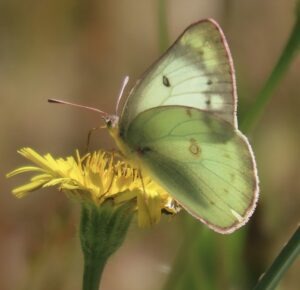 The California dogface butterfly has two brooding periods. The first brood lasts from April to July, peaking in June, and the second flies from August to October.
The California dogface butterfly has two brooding periods. The first brood lasts from April to July, peaking in June, and the second flies from August to October.
John expects that the springtime’s vetch, which fades with the summer heat, will be replaced by Italian thistle and then accompanied by Milk thistle, Bull thistle, and the thistle look-alike, star thistle to carry the butterflies through the summer and into autumn.
John explains, “While Hairy vetch was introduced and is useful, these other invasives (thistles) are generally considered entirely noxious and needing extirpation. A reminder for conservation-minded land management is that biology never runs backward! Any Eden of the future will look quite a bit different than those of the past.”
When species need more than time to adapt
While one species is adapting to new nectaring plants in our region, another effort is underway to reestablish a native species to feed one specific butterfly that requires it as its sole larval host plant to survive – the monarch.
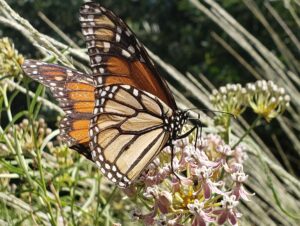 Through a science-based program, the North Bay Monarch Working Group, spearheaded by the Gold Ridge Resource Conservation District in west Sonoma County, is restoring the monarch butterfly populations, which have sharply declined due to habitat loss, pesticide use, climate change, and parasitism. Monarchs rely on milkweed as their host plant for reproduction, but it has been largely removed from their natural habitat in California. Working through funding from the National Fish and Wildlife Foundation and California Wildlife Conservation Board, the Working Group has supplied and delivered thousands of narrowleaf milkweed plants across the North Bay region to support monarch restoration efforts. Additionally, they participate in conservation initiatives such as managing overwintering sites and monitoring monarch populations.
Through a science-based program, the North Bay Monarch Working Group, spearheaded by the Gold Ridge Resource Conservation District in west Sonoma County, is restoring the monarch butterfly populations, which have sharply declined due to habitat loss, pesticide use, climate change, and parasitism. Monarchs rely on milkweed as their host plant for reproduction, but it has been largely removed from their natural habitat in California. Working through funding from the National Fish and Wildlife Foundation and California Wildlife Conservation Board, the Working Group has supplied and delivered thousands of narrowleaf milkweed plants across the North Bay region to support monarch restoration efforts. Additionally, they participate in conservation initiatives such as managing overwintering sites and monitoring monarch populations.
Noelle Johnson, deputy director of the Gold Ridge RCD shares, “To date, the Working Group has propagated and distributed around 8,000 milkweed starts (most notably at the Laguna Foundation nursery) for wildland restoration, school and community gardens, and on-farm habitat at over 170 sites throughout the North Bay, primarily Sonoma, Marin, and Napa Counties. The project involved a large array of partners and landowners, including the Laguna Foundation, Marin Monarch Working Group, Conservation Works, Sonoma County School Garden Network, Marin County Parks, Point Blue Conservation Science, Sonoma County Regional Parks, Refugia Marin, SPAWN, Napa RCD, and Western Monarch Society, and they are starting to see some promising results.”
A positive transformation is underway
Populations of western monarchs, counted annually at their coastal CA overwintering sites through surveys facilitated by the Xerces Society for Invertebrate Conservation, plummeting from estimates once numbering in the millions to under 2,000 by late Fall 2020. Conservation efforts throughout the west ramped up in response, and monarch numbers quickly bounced back to levels not seen in over a decade, with nearly a quarter million butterflies counted in Fall 2021. While the counts have since fluctuated, conservationists remain hopeful that widespread interest in monarch recovery will help the population remain viable. In the North Bay, the Working Group’s milkweed planting sites have already begun hosting significant numbers of caterpillars – some with so many they’ve had to be relocated to other sites or risk running out of milkweed to eat.
What you can do to help
Continued expansion of milkweed propagation to support monarch breeding, along with permanent protection for coastal tree stands to preserve overwintering habitat, remain paramount to ensuring western monarch populations remain at self-sustaining levels. The most encouraging aspect of monarch butterfly recovery is that it can involve almost everyone. Unlike programs to restore endangered species like coho salmon, which can only occur in long reaches of select streams, efforts to support monarchs and other essential pollinators rely on relatively small, widely dispersed actions, even tending native nectar sources in flower pots on an apartment balcony. Noelle adds, “Our program has had a big emphasis on schoolyard habitats, particularly in underserved urban areas, in hopes of engaging multitudes of students who may otherwise feel removed from wildlife conservation efforts.”
How to get involved While planting and maintaining milkweed stands with other flowering native nectar plants are the surest way to support monarch populations, even those without a space to plant can participate in citizen science monitoring efforts. Records of sightings of caterpillars and adult butterflies on the app iNaturalist have proven crucial to conservationists trying to track the monarch migration patterns and breeding activities. By simply uploading a photo and checking the boxes for “North Bay Monarchs” and “Western Monarch Milkweed Mapper” as “Projects”, (the latter pulls up fields to allow for multiple entries), citizen scientists can help contribute to valuable data collection efforts.
You can see our where we have delivered milkweed here:
Gratitude in Bloom: Celebrating our Spring Matching Gift Success!
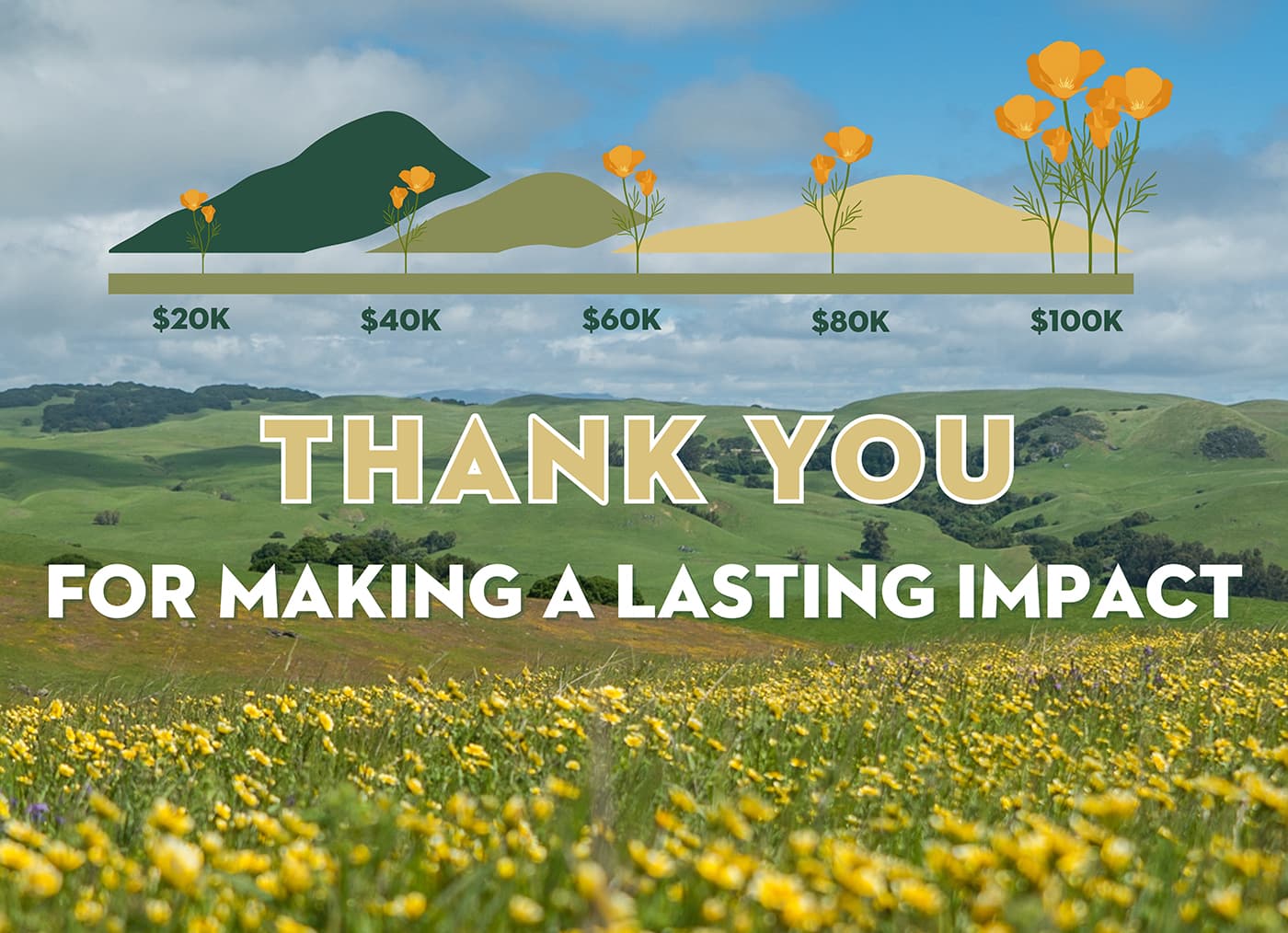
Thanks to your incredible generosity and dedication we have exceeded our ambitious spring challenge goal, with 478 members contributing over $100,000! This accomplishment wouldn’t have been possible without the steadfast support of individuals like Anita Das, Gordon Dow, and Bill Osterland, whose generous donations were instrumental in matching our collective efforts.
Meg and Tom Sokoloski beautifully expressed their motivation for giving, stating, “We have always enjoyed spending our free time exploring outdoors. Living in Sonoma County offers us that opportunity right in our own backyard. We are forever grateful for the impact that Sonoma Land Trust has had protecting and preserving open space for generations to come. We didn’t have to think twice about taking advantage of the opportunity to double the impact of our donation during the current match program.”
Our community holds immense power, supporting critical land and restoration projects across the Baylands and throughout Sonoma County. Together, we can continue preserving healthy ecosystems, mitigating the impacts of climate change, restoring vital wildlife habitats, and ultimately enhancing this special place for future generations. Your commitment to our cause inspires us every day. Thank you!
A Force for Nature: A legacy of conservation
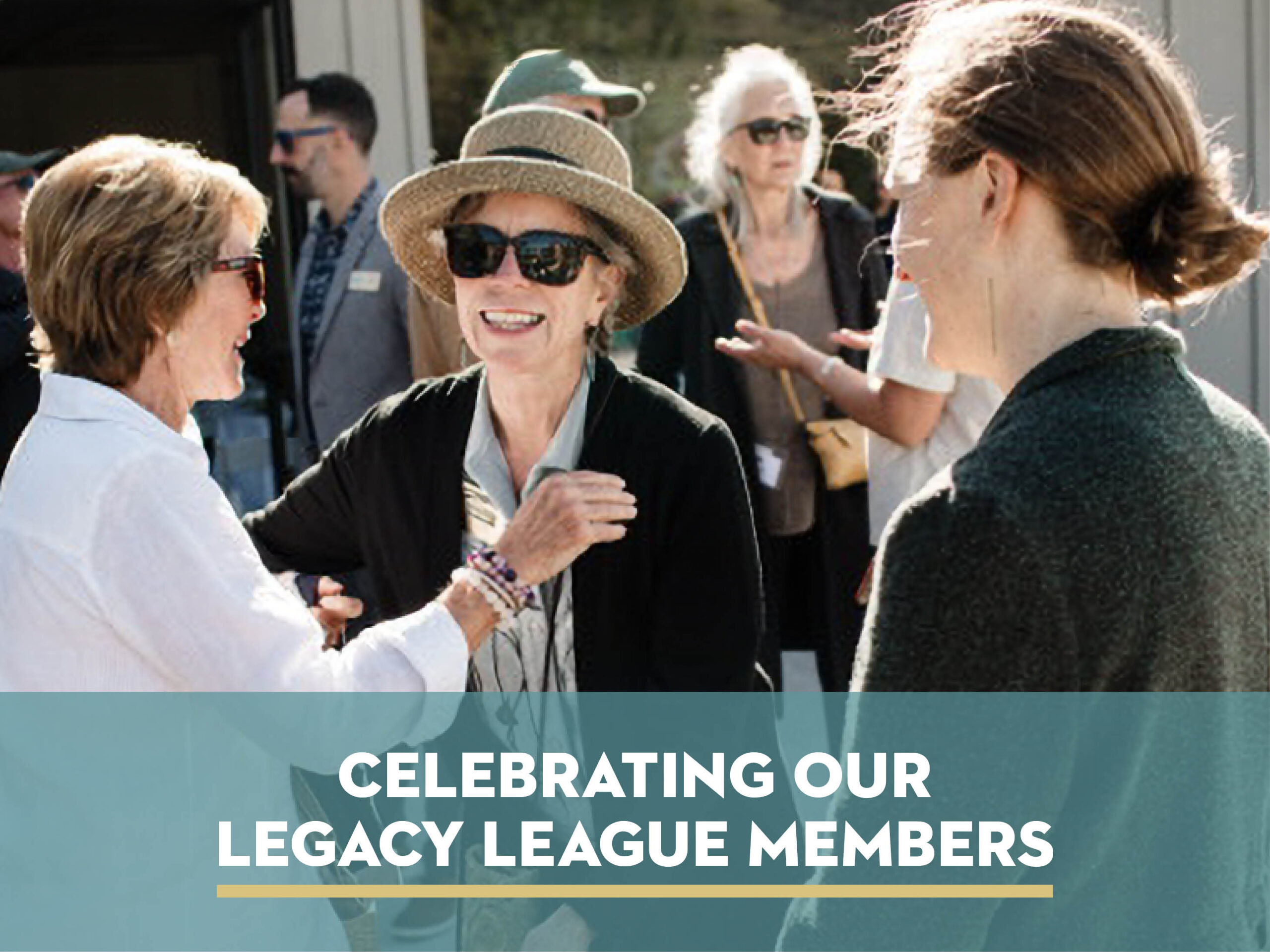
Thank you to all our Legacy League and Alumni Board Council Members who joined us for dinner on April 19! It was such a treat to gather in person to celebrate these generous supporters who are thinking ahead to ensure the beauty, biodiversity, and resiliency of Sonoma County far into the future.
Legacy League members are part of a community of people who are making land conservation part of their legacy. When you join, you receive invitations to our annual Legacy League event and other special gatherings and online presentations. Learn more on our website, and contact Camille Matson, Planned Giving Manager with your specific questions.
Celebrating Pride Month

Happy Pride! We had a blast last weekend at the Sonoma County Pride Parade and Festival, celebrating queerness in the human and natural worlds and connecting with our community. We at Sonoma Land Trust are proud and enthusiastic supporters, allies, and members of the LGBTQIA+ community.
In recent years, legislators have introduced numerous laws against the LGBTQIA+ community, such as bans on gender-affirming care for trans youth, laws regulating bathroom access, book bans, and restrictions on teaching and discussing gender and sexuality.
As a land trust at the nexus of science, community, and climate change, it’s critical that we speak up against hate and violence and show our support of LGBTQIA+ representation, not just in our field of conservation and the outdoors but in all settings. We’re working toward a culture not only of respect and inclusion, but enthusiastic celebration of expansive gender and sexual identities. A rich diversity of backgrounds, experiences, perspectives, and values makes our work stronger, and our future more vibrant.
OpenRoad

We are thrilled to share our OpenRoad episode where the team explores the lives of our local mountain lions with Dr. Quinton Martins from True Wild, and roams the landscape as wildlife do with our very own Melina Hammar! Melina discusses the importance of wildlife corridors that connect open space through urban pinch points, and how Sonoma Land Trust protects these critical throughways in Sonoma Valley.
Webinars

Check out the Language of the Land playlist on our YouTube to catch up on any of our monthly webinars you may have missed. Topics range from sea otters as restoration tools to the Chileno Valley Newt Brigade and so much more. Watch today!
We're Hiring

Voted one of the “Best Places to Work” by the North Bay Business Journal, Sonoma Land Trust is more than just a nonprofit — we’re a community working together toward the vital goal of protecting the land forever.
Join us in Nature
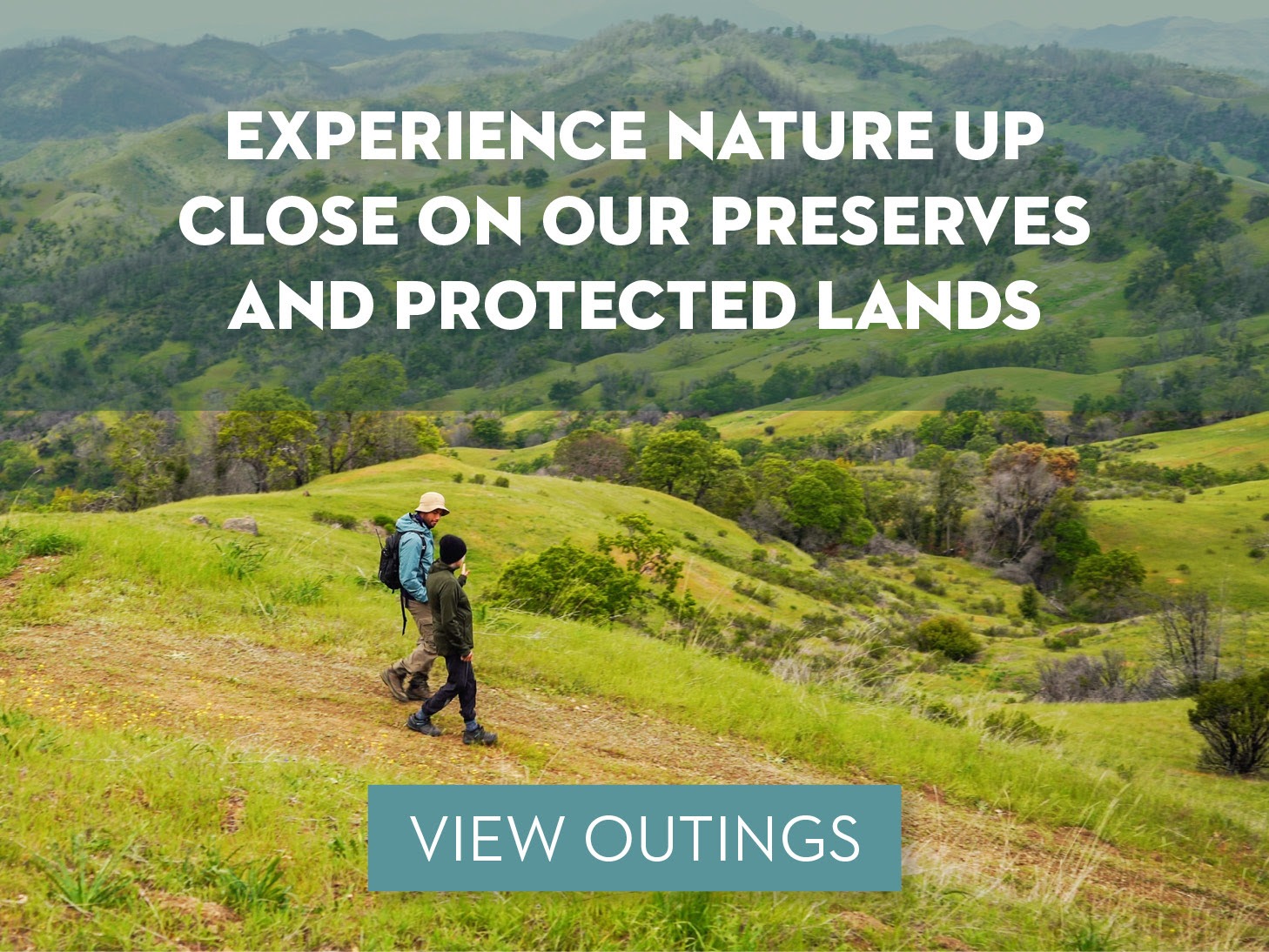
Join us out in nature this month! We’ll explore the forest at Jenner Headlands Preserve and enjoy a bilingual family-friendly walk. Visit our outings page to register.
Many of these hikes are in partnership with Sonoma County Ag + Open Space.
Staff recommendation

Have you ever wondered what an octopus might be thinking? How can a creature so different from us form tight bonds with keepers and strangers? I have been a fan of octopuses for quite some time and am loving the book the Soul of an Octopus by Sy Montgomery. This National Book Award Finalist features several octopuses around the globe, exploring questions of consciousness, intelligence, and the connection between humans and the natural world. I highly recommend this book as a beach or ocean read; it will make you see octopuses in a whole new light.
Ariana Rickard, Public Policy and Funding Program Manager
